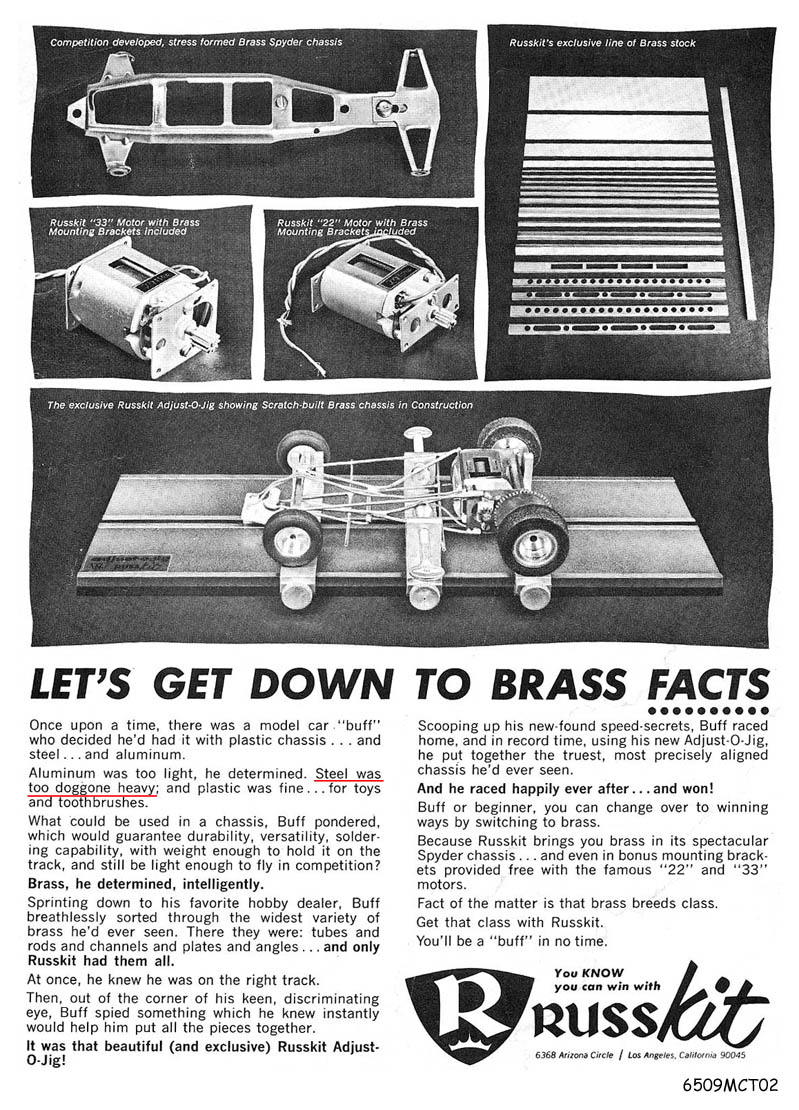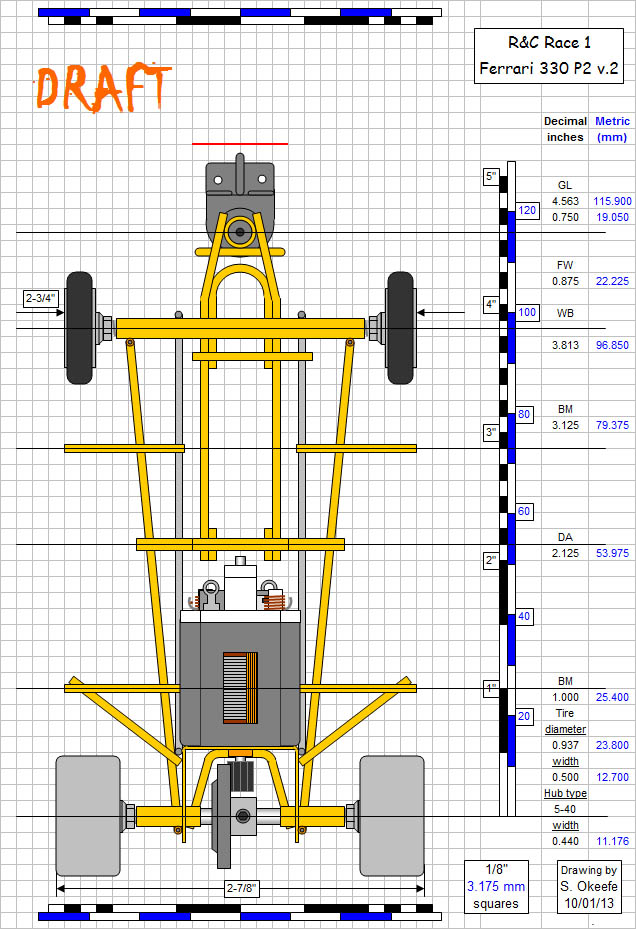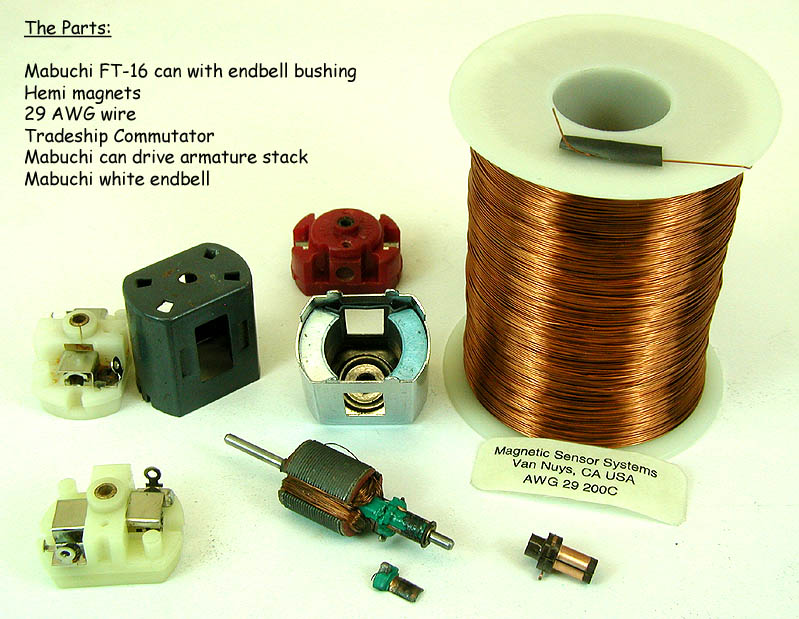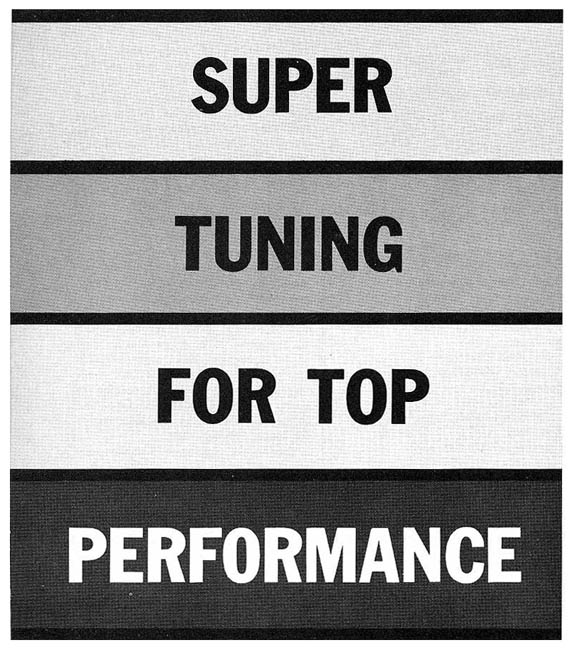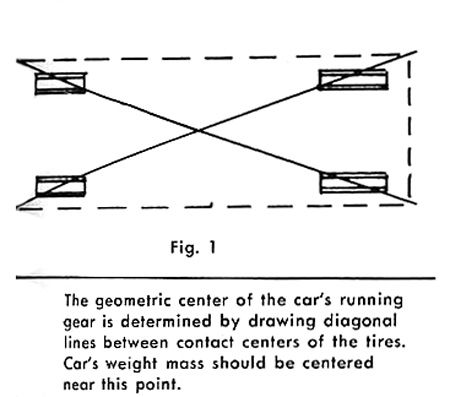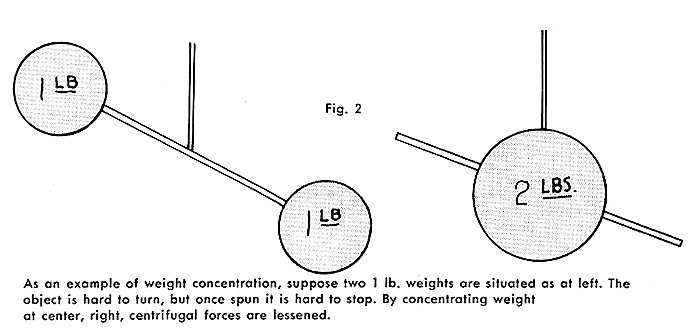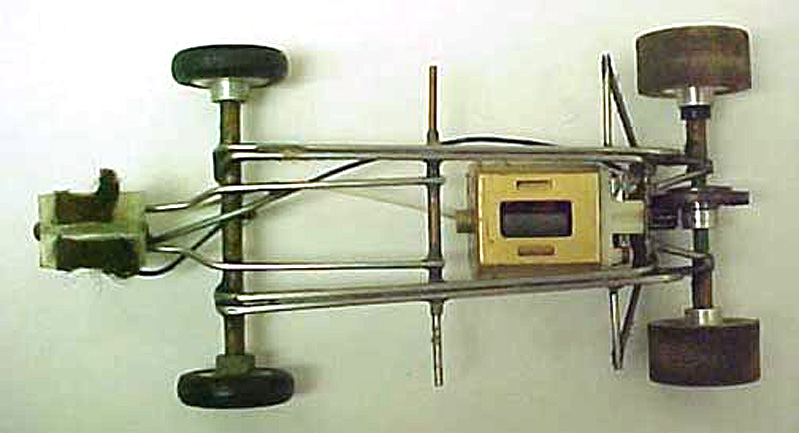It's January 1966. The first race in the new Rod & Custom Road Race series is coming up and I need to build a car. What to build?
I'm hearing all sorts of theories about how to build chassis and motors, like super light-weight design including vacuum-formed bodies, keeping the mass of the car near the center, and hand winding motors with heavier guage wire.
Being a second year engineering student, I tend to think in terms of measuring and testing, then building based on results, rather than just going with popular notion. I'm also more interested in the chassis, motor and running gear than the body (sorry, Mike M.).
The most common material for scratchbuilding chassis is brass, mostly because it is relatively cheap, plentiful, comes in many shapes and sizes, and is easy to solder. Those are good points; so we'll start with brass.
Next, wheels. We want super light-weight, low rotating mass, all that good stuff. Magnesium is the obvious choice, just like full size cars, right? Set screw wheels are very nice, but I haven't seen any magnesium ones. I've always liked Mila Miglia wheels, they fit the requirements better than Cox wheels.
Guide and gear. Cox has two products on the market that are very nice; a nifty little compact pickup guide, and a gear with an aluminum set screw hub and teeth made of something they call Coxalloy. All-metal gears are very strong and stable, but have by comparison a higher rotating mass and thus take more power (directly from the motor) to accelerate and slow down.
Now, the motor. Pittman has been a mainstay since the very earliest days, but lately there's a new competitor that has been producing better and better motors for slot racing applications - Mabuchi. There's a new model out there that has the pinion gear on the end opposite the brushes. This has some excellent potential advantages.
So, let's get to a chassis design. Inline drive is the choice because it's much easier to build a simple light-weight chassis than with sidewinder drive. Super light-weight construction limits me to two main rails on each side. I've also heard (and agree) that those rails, and indeed everything else on the chassis should be as close to the minimum track clearance as possible, to keep the vertical Center of Gravity (CG) down.
We need a drop arm to help keep the pickup guide in the slot, and the body will be mounted using pin tubes. A little computer-based drawing work and, presto! (click to enlarge):
Now, in classic engineering fashion, we begin tinkering to improve the design. What about that brass construction? I read a Russkit ad in the September issue of Model Car & Track that claims steel chassis are heavier than brass chassis, implying steel is heavier (denser) than brass (click to enlarge):
Being the skeptical type, I began to wonder about that.
So, I go look up the densities of various materials, including brass and steel. What do you know? The density of brass is 4.86 ounces per cubic inch, and the density of steel is 4.56 ounces per cubic inch. Steel is actually lighter than brass, not heavier.
Not one to just believe what a stranger tells you? Good! Let's check that ourselves.
I dug out my gram scale and started weighing things. First I weighed 1/16" brass rod, then tube, then 1/16" steel welding (not bronze brazing) rod, then various diameters of piano wire and finally 1/16" stainless steel hypodermic (very thin wall) tube. Here are the results:
How to read this chart:
The left column is a description - self explanitory.
The next column is the weight in grams per foot, organized heaviest to lightest.
The next column compares all other materials to brass rod; so if 1/16" brass rod is 100 percent, then 1/16" brass tube weighs 66 percent as much, etc.
The right hand column compares all other materials to brass tube; so if 1/16" brass tube is 100 percent, then 1/16" brass rod weighs 152 percent as much, etc.
By the way I'm not going to claim that my scale is calibrated perfectly (it probably isn't); besides it doesn't matter. What matters is a consistent comparison between different materials, and I think I've achieved that.
What can we deduce from this chart?
Building with 1/16" brass tube is adequate, it is the fourth lighest material, easy to shape and solder, but not terribly strong.
Stainless steel hypodermic tubing is significantly lighter (weighing only about 3/4 as much) and much stronger, but hard to shape and solder.
.039" piano wire is really light; only about half the weight of 1/16" brass tube (!), but chassis built with it will be far too flexible and "springy". Besides, it's an "odd" size (1 mm) that is so small the solder joints will be fairly weak due to the small surface area. You might be able to overcome this with gusset plates, copper wire ties, and miscellaneous braces, but it would complicate the chassis design, and in engineering school they teach you that "simpler is always better".
So let's look the other way. .055" piano wire is only 10 percent heavier than 1/16" brass tube, but also less than 3/4 the weight of brass rod, and far stronger than either. It's stiff enough to not be "springy" and large enough in diameter to have sufficient surface area to form good strong solder joints without gussets, braces or ties. Hmmm...
Tune in next time for a chassis re-do, including why I did not use the lightest possible material to build the chassis, why I chose can drive, and rooting around for parts to build the motor.






